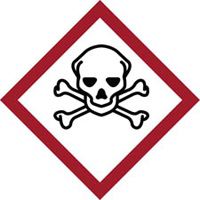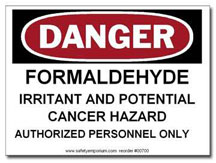| The Home page of ILPI's Safety Data Sheet (SDS) Resource, the leader in SDS information since 1995! | |
| The history and philosophy behind this resource. | |
| A curated collection of books and reference materials concerning Safety Data Sheets and closely related topics. | |
| Paste your plain text SDS into the SDS-Demystifier, and it will be converted into a hypertext-enriched document with links to detailed explanations of each key term. | |
| An extensive list of frequently asked questions about Safety Data Sheets including regulations, content, compliance, and more. | |
| A humorous take on Safety Data Sheet jargon. Fill in the blanks on our entry form to generate a personalized Unsafety Data Sheet to share with your coworkers. | |
| Since 1995, we've maintained this massive curated list of the best places to find Safety Data Sheets on the Internet. | |
| You are here! Way more than a glossary, this hypertext-enhanced resource covers hundreds of SDS-related terms and expert knowledge. Each entry includes both the SDS relevance and links to additional authoritative resources. | |
| Archived results of Safety Data Sheet related polls taken by some of our millions of site visitors | |
| The OSHA regulations behind SDS regulations, including the inspection guidelines and over 400 official interpretations letters under the Hazard Communication Standard | |
| Commercial suppliers of SDS authoring and management software as well as cloud compliance services. | |
| Commercial companies that will create SDS's for your specific needs as well as SDS translation companies. |

Safety signs, banners, and scoreboards? Get yours at Safety Emporium!
Definition
An antidote is an agent, remedy or treatment that counteracts the effect(s) of a poison or toxin.
Additional Info

Get your GHS-compliant labels and signs from Safety Emporium.
Antidotes work by a variety of mechanisms. Here are just a few examples:
- Ingested drug overdoses are often treated with oral doses of activated charcoal which binds the poison tightly, making it harder for your body to absorb the poison in the gastrointestinal tract.
- Naloxone (Narcan) is an antidote for opiate (heroin, oxycodone, fentanyl etc.) overdoses that can be administered as a nasal spray or using an auto-injector (similar to an EpiPen™). It blocks the opiate receptors in the brain and works in seconds to restore normal breathing in patients that might otherwise die.
- Syrup of ipecac removes a poison from your stomach by inducing vomiting.
- The antidote for ethylene glycol poisoning (from drinking antifreeze, for example), is ethyl alcohol; this keeps the body busily metabolizing the chemically similar alcohol instead of the toxin.
- Calcium gluconate gel is a topical (skin-applied) antidote for hydrofluoric acid exposure; it works by trapping the fluoride ion, F-, as CaF2.
- Atropine is an antidote for organo-phosphate poisoning caused by certain pesticides or nerve gases. It works by binding to your nervous system's acetylcholine receptors, protecting them against the excess acetylcholine produced when organo-phosphates bind to an enzyme called acetylcholinesterase.
Antidoes are specific to each toxin and must be carefully considered on a risk/benefit basis. Using the wrong antidote can worsen the situation. For example, inducing vomiting when someone has swallowed a strong acid will cause additional damage to the throat and esophagus on the way back up. Therefore, antidotes should only be administered with the guidance of a medical professional.
SDS Relevance
Antidotes, if applicable, will be found on Section 4 of an HCS 2012-compliant SDS and are meant for use by emergency personnel. Some antidotes are useful only for certain kinds of exposures such as skin absorption, ingestion or inhalation so administration of an antidote should only be done after contacting a poison control center or other medical professional. When seeking emergency treatment for a chemical exposure, it is very useful to take the SDS and label (if feasible and not dangerous) with you to the emergency room.
You can contact the American's Poison Centers in an emergency situation by calling (800) 222-1222 (or call your local hospital emergency room).
See the references in the poison entry for more about emergency poisoning procedures and resources.
Further Reading
- American's Poison Centers or call (800) 222-1222.
- Poison Prevention and Treatment Tips for Parents by the American Academy of Pediatrics.
- Poisoning, a 9 page resource at emedicinehealth.
- Activated Charcoal at WebMD.
- The California Poison Control System has a handy Antidote chart.
- The World Health Organization (WHO) offers technical guidance on antidotes and their availability.
- Naloxone DrugFacts at the NIH's National Institute on Drug Abuse.
See also: activated charcoal, catharsis, emetic, highly toxic, poison.
Additional definitions from Google and OneLook.